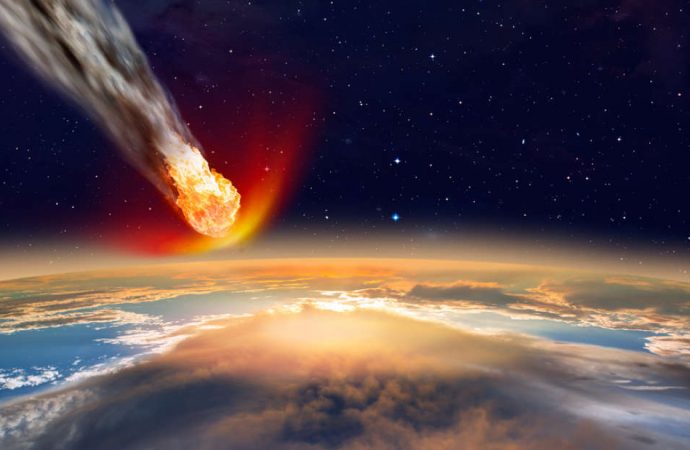Iridium, a metal associated with the asteroid that ended the Cretaceous era can act like a stealth bomb, entering the nucleus of a cancer cell.
When hit with a burst of light, it causes nearby oxygen molecules to become reactive, killing the cell. Whether this can be turned into a viable mechanism for fighting cancer in living things remains to be seen, but it’s hard to dispute it would be the coolest anti-cancer therapy ever.
Certain molecules, when exposed to light, produce oxidizing agents. These are much more harmful to fast-dividing cancer cells than to healthy cells. If the right molecules can reach the nuclei of cancer cells, which then get lit up using optical fibers, it should be possible to destroy tumors without harming nearby healthy cells. Professor Peter Sadler of Warwick University has shown in Angewandte Chemie International Edition an iridium complex performs the oxidizer production role particularly well.
What iridium complex doesn’t do on its own is travel to where it is needed. However, Sadler has a solution to that. The blood protein albumin is not only attracted to cancer cells, but penetrates their nucleus, and can carry an iridium payload.
“It is fascinating how albumin can deliver our photosensitizer so specifically to the nucleus, co-author Dr Cinzia Imberti said in a statement.

When combined with albumin, Sadler’s iridium complex has two advantages over previous photosensitizers; it targets the cell nucleus, rather than the less essential parts of the cell, and is strongly luminescent. The second trait means scientists don’t just need to assume success based on a trail of destroyed cancer cells, they can watch in real time as the molecules do their work.
The iridium photosensitizers have yet to be tested in animals, let alone humans, but the potential is clear.

Iridium is a heavy metal, the densest of any element, that makes up only a small component of asteroids, but an even smaller part of Earth’s crust, having mostly fallen to the core. Consequently, its presence in higher than usual concentrations in the Earth can be a marker of an asteroid impact. The layer of iridium laid down across the globe 66 million years ago was one of the most important pieces of evidence for the asteroid strike thought to have dealt the coup de grace to the non-avian dinosaurs.
Besides its role in paleontological detective work, iridium is mainly used today for its exceptional anti-corrosion capacity at high temperatures. It’s extremely low concentration in Earth’s crust means only around 3 metric tonnes of it is mined each year – compared to 3,000 tonnes of gold. Presumably, the quantities required for medical work will be tiny, but if we ever find supply is insufficient, there are always asteroids.
Source: IFL Science

































Leave a Comment
You must be logged in to post a comment.